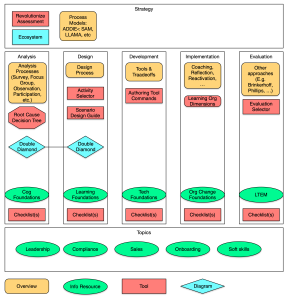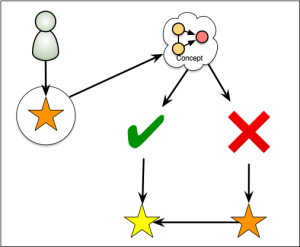The good news is, the Learning Science Conference has gone well. The content we (the Learning Development Accelerator, aka LDA) hosted from our stellar faculty was a win. We’ve had lively discussions in the forum. And the face to face sessions were great! The conference continues, as the content will be there (including recordings of the live sessions). The open question is: what next? My short answer is going beyond learning science.
So, the conference was about what’s known in learning science. We had topics about the foundations, limitations, media, myths, informal/social, desirable difficulty, applications, and assessment/evaluation. What, however, comes next? Where do you go from a foundation in learning science?
My answer is to figure out what it means! There are lots of practices in L&D that are grounded in learning science, but go from there to application. My initial list looks like this:
- Instructional design. Knowing the science is good, but how do you put it into a process?
- Modalities. When you’re doing formal learning, you can still do it face to face, virtually, online, or blended. What are the tradeoffs, and when does each make sense?
- Performance consulting. We know there are things where formal learning doesn’t make sense. We want gaps and root causes to determine the right intervention.
- Performance support. If you determine job aids are the answer, how do you design, develop, and evaluate them? How do they interact with formal learning?
- Innovation. This could (and should; editorial soapbox) be an area for L&D to contribute. What’s involved?
- Diversity. While this is tied to innovation, it’s a worthy topic on its own. And I don’t just mean compliance.
- Technology. There are lots of technologies, what are their learning affordances? XR, AI, the list goes on.
- Ecosystem. How do you put the approaches together into a coherent solution for performance? If you don’t have an ‘all singing, all dancing’ solution, what’s the alternative?
- Strategy. There’s a pretty clear vision of where you want to be. Then, there’s where you are now. How do you get from here to there?
I’m not saying this is the curriculum for a followup, I’m saying these are my first thoughts. This is what I think follows beyond learning science. There are obviously other ways we could and should go. These are my ideas, and I don’t assume they’re right. What do you think should be the followon? (Hint: this is likely what next year’s conference will be about. ;)


